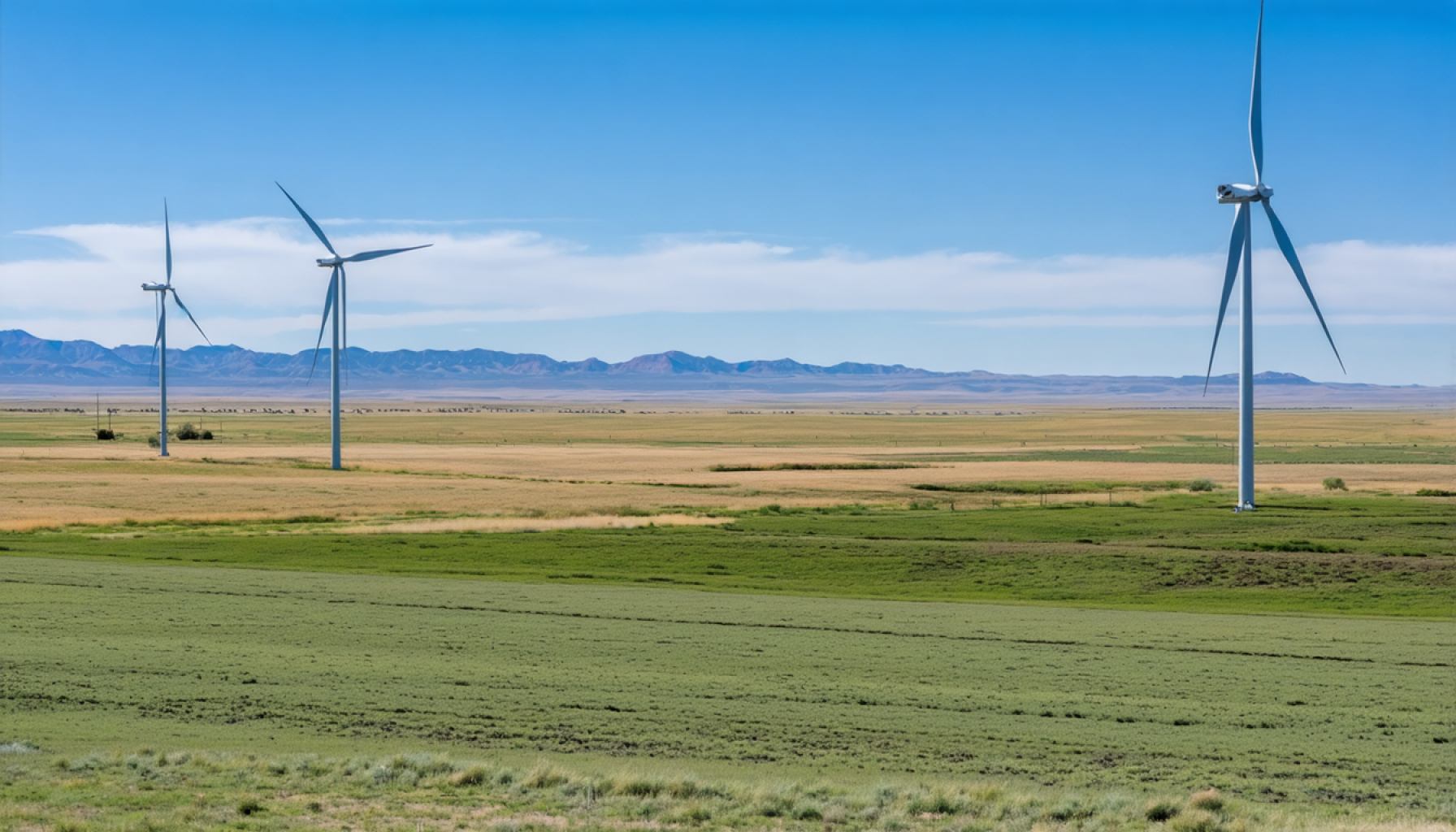- A massive $3.2 billion federal fund is driving a transformative shift in Colorado’s energy landscape.
- The Tri-State Generation and Transmission Association is leading with $2.5 billion to replace coal plants with renewable energy sources across several states.
- Key projects involve developing 1,380 megawatts of new solar and wind energy and expanding battery storage networks.
- Electric cooperatives like United Power and CORE Electric Cooperative are major beneficiaries, focusing on renewable power agreements.
- Additional cooperatives such as Yampa Valley Electric and others are investing in local solar initiatives to strengthen rural grids.
- The initiative aligns with goals for energy independence and grid resiliency while fostering economic vibrance in rural America.
A gust of change sweeps through rural Colorado as a staggering $3.2 billion in federal funds is released, earmarking a bold transformation in energy production. When these funds, initially frozen by an administrative pause, were unlocked by the Trump administration, it was akin to a powerful wind clearing stormy skies over the state’s landscape of mighty hills and sprawling plains.
The six electric cooperatives and the Tri-State Generation and Transmission Association have a remarkable opportunity—stick with their initial proposals under the New ERA program or pivot to align with President Trump’s “Unleashing American Energy” executive order, which champions energy independence. The directive is crystal clear: revise proposals if they wish to remove features tagged as “far-left climate” policies or remain steadfast with their plans.
The funds, part of the Inflation Reduction Act, initially faced scrutiny under an administrative review by the Department of Agriculture. Brooke Rollins, the Secretary of Agriculture, painted a vivid picture of the future, envisioning these investments fueling a journey toward energy independence and vibrance in rural America.
At the forefront of this transformation is Westminster-based Tri-State, commanding the largest share with $2.5 billion in grants and loans. The vision? Closing 1,100 megawatts of coal-fired plants scattered across Arizona, New Mexico, and Colorado, and ushering in an era of renewable prowess. The rugged beauty of northwestern Colorado, dominated by the towering Craig Station coal plant, is already seeing the glimmers of change as solar panels begin to dot the horizon.
Tri-State’s ambitious blueprint includes a formidable 1,380 megawatts of new solar and wind facilities and an expansive battery storage network stretching across their territory in Colorado, Nebraska, New Mexico, and Wyoming. This move promises not only to enhance rural energy resilience but also to illuminate the path toward a sustainable future.
Eager for transformation, United Power and CORE Electric Cooperative lead the charge as Colorado’s largest cooperatives. United Power, with a robust $262 million award, and CORE, holding a significant $225 million, plan to channel these funds into extensive power purchase agreements, embracing hundreds of megawatts in renewable energy accolades poised to revitalize their power portfolios.
The transformative wave doesn’t end there. Yampa Valley Electric, rooted in the picturesque town of Steamboat Springs, rallies with a $50 million grant. Grand Valley Power and the San Miguel Power Association, along with Mountain Parks Electric, follow closely, each securing funds to bolster local solar initiatives, charging the rural grid with sustainable vigor.
This monumental release of funds charts a course for a nimble, renewable-powered future for Colorado. “These projects will improve the resiliency of the electric grid and offer reliable, affordable power to co-ops,” underscores Kent Singer, executive director of the Colorado Rural Electric Association.
Grassroots communities now stand at the brink of an energy revolution, where cleaner skies and brighter tomorrows await. The takeaway from this historic infusion of resources is unequivocal: Rural Colorado is not just dreaming of sustainability; it’s paving a future that resonates with the renewable pulse of modern energy innovation.
The $3.2 Billion Energy Revolution: Colorado’s Journey to a Sustainable Future
Unlocking the Potential of Federal Funds in Rural Colorado
The recent allocation of $3.2 billion in federal funds to rural Colorado marks a pivotal moment in the state’s transition towards sustainable energy. This significant investment, rooted in the Inflation Reduction Act and rejuvenated by the Trump administration, offers rural electric cooperatives an extraordinary opportunity to redefine their energy production strategies. Let’s explore additional facets of this transformational initiative and answer key questions.
Additional Insights & Industry Trends
1. Shifts in Energy Policy: Electric cooperatives in Colorado must decide whether to adhere to their initial renewable energy-centered proposals or revise them in accordance with the “Unleashing American Energy” executive order. This directive focuses on minimizing “far-left climate” policies, emphasizing energy independence.
2. Tri-State’s Strategic Plan: Tri-State Generation and Transmission Association is leading the charge with $2.5 billion dedicated to closing coal-fired plants and establishing new renewable projects. The goal is to deploy 1,380 megawatts of solar and wind energy, coupled with battery storage solutions, across Colorado, Nebraska, New Mexico, and Wyoming.
3. Expansion of Renewable Resources: United Power and CORE Electric Cooperative are receiving substantial funds to invest in renewable energy through power purchase agreements. This enables them to integrate more clean energy sources into their power grids.
User Questions and Concerns
– What are the implications for local communities?
Local communities, especially in rural areas, will experience enhanced grid reliability and potentially lower energy costs due to increased use of renewables. There are also opportunities for local job creation in the installation and maintenance of new energy facilities.
– How will this affect energy independence?
By transitioning from coal to renewable sources, Colorado will reduce its reliance on external energy and fossil fuels, bolstering its energy independence and resilience.
– What are the environmental impacts?
The shift to renewable energy significantly decreases greenhouse gas emissions and air pollution, contributing to cleaner air and advancing climate goals.
Controversies & Limitations
– Policy Revisions: With the need to navigate federal policy changes, some proposals might face delays or require adjustments to align with new regulatory frameworks.
– Community Adjustments: Regions reliant on coal for employment might experience economic shifts as plants close or repurpose. Mitigating these effects will require robust economic transition plans.
Real-World Use Cases
– Grid Resilience Projects: The establishment of solar and wind facilities will improve energy reliability in rural areas that experience grid disruptions more frequently.
– Battery Storage: Deployment of battery storage will assist in managing energy supply fluctuations, ensuring consistent power availability.
Actionable Recommendations
– For Communities: Stay informed on local projects and engage with cooperative meetings to understand changes and potential benefits.
– For Cooperatives: Develop transparent communication strategies to explain changes and benefits to local communities. Foster partnerships with educational and vocational institutions to prepare the local workforce for new energy jobs.
– For Policymakers: Provide clear guidelines and flexible frameworks to allow swift adaptation to federal policy changes, ensuring continued progress in projects.
Conclusion
Rural Colorado is charting a path to becoming a beacon of renewable energy innovation and sustainability. This large-scale investment offers a blend of challenges and opportunities, demanding proactive engagement from cooperatives, policymakers, and communities alike. As this energy transformation unfolds, Colorado stands at the forefront of America’s journey towards a cleaner, more resilient energy future.
For more information on energy transformation and sustainable initiatives, visit Colorado Government’s official site.










